Civil War Shipwreck: Photos of the USS Monitor
Ready for Action

Sixteen men were lost when the USS Monitor went down in a storm off Cape Hatteras on Dec. 31, 1862, while it was being towed. The sunken ship was discovered in 1974 resting upside down on the ocean floor in about 235 feet (71 meters) of water; efforts to salvage artifacts from the site began in 1998.
Here, a line engraving, published in "Harper's Weekly", 1862, depicting the ship "Ready for Action" after her pilothouse was modified with angled armor plating around its sides.
Onboard USS Monitor
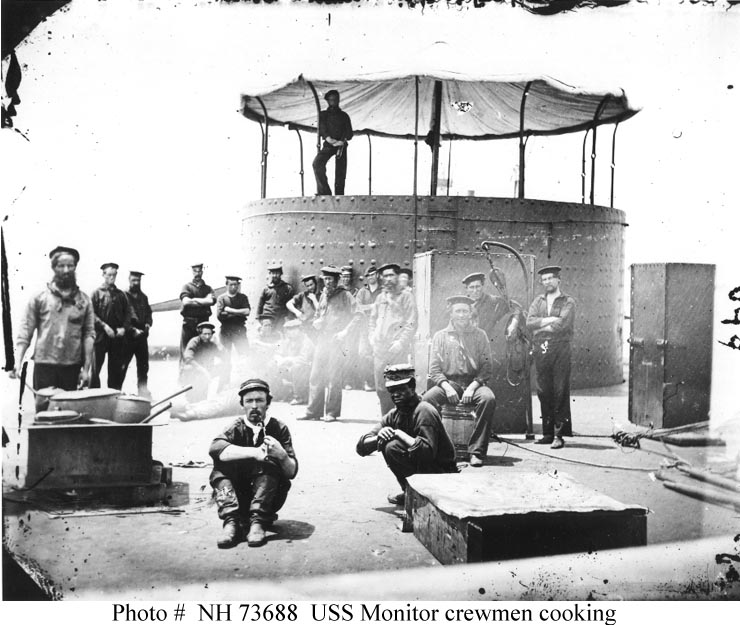
Crewmembers cooking on deck, in the James River, Virginia, 9 July 1862. Photographed by James F. Gibson. This view looks forward from the port quarter, with the port side blower hatch in the foreground, the two smokestacks in the middle distance and the turret beyond. The sailor standing atop the turret is holding a telescope.
On the deck
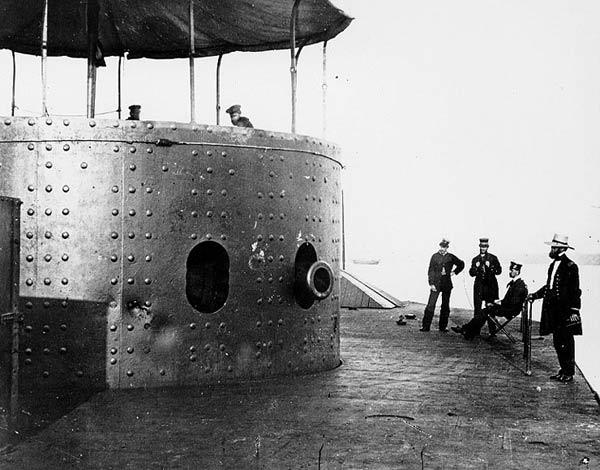
A photo from July of 1862. On the deck of the USS Monitor, looking forward on the starboard side. The large dents in the gun turret's armor are scars from Confederate heavy guns. The Monitor was a low-lying, floating fortress. Only about 18 inches of the ship appeared above the waterline.
The engine

Still upside down, the engine is lifted from the Atlantic in 2001. It was built chiefly from wrought iron, cast iron and copper alloy.
Ship sailors
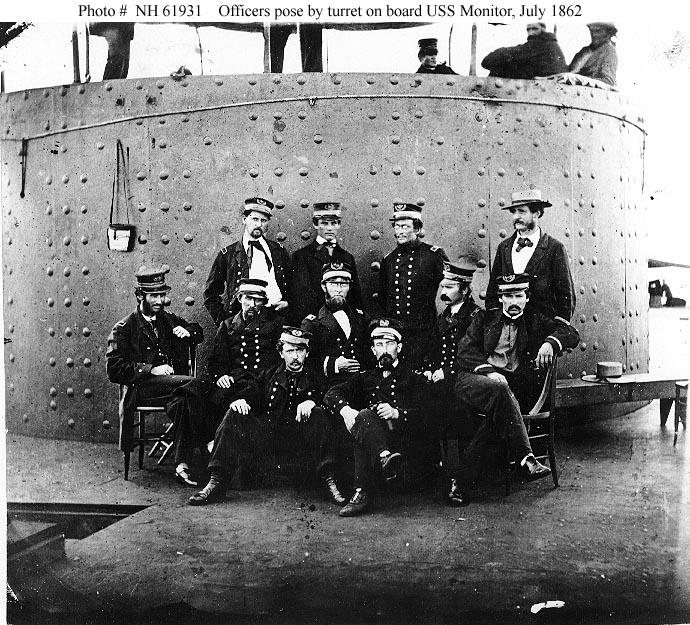
Officers on deck, posed by her armored gun turret, while the ship was in the James River, Virginia, 9 July 1862.
In battle
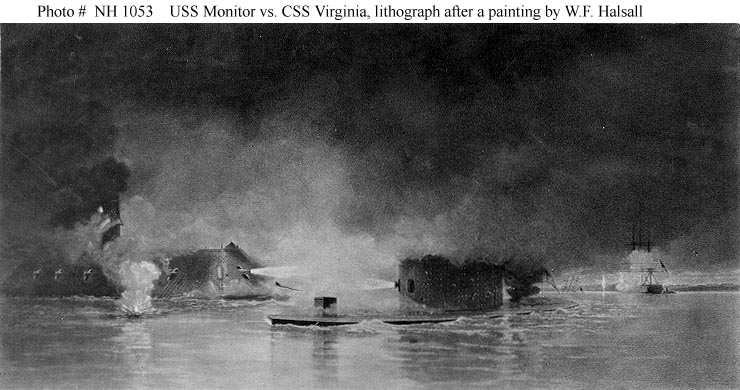
The Brooklyn-built USS Monitor was famous for fighting the CSS Virginia in the Battle of Hampton Roads on March 9, 1862. Although the battle was a draw, it preserved the Union blockade of the Norfolk-area. It also was the first battle between two ironclad warships, marking a turning point in naval history.
Here, a lithograph by Closson Blake, after a painting by W.F. Halsall, depicting the two ironclads engaging at close range.
CSS Virginia
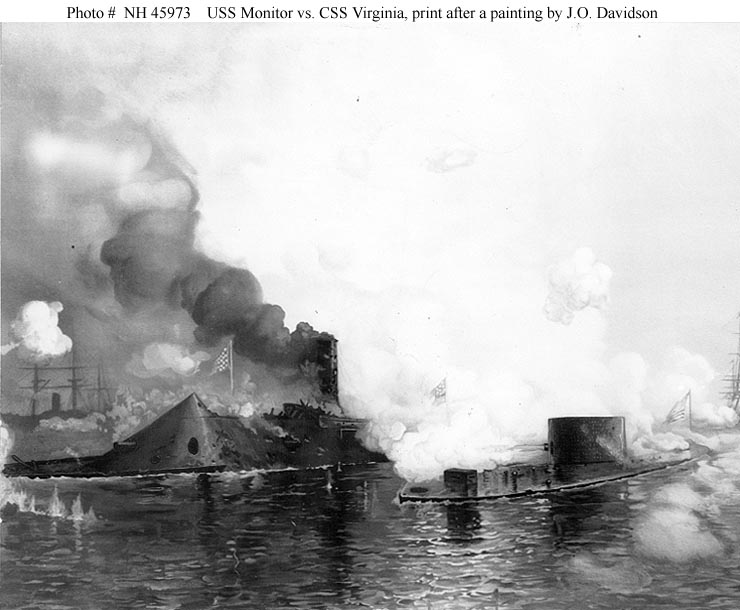
The USS Monitor in action with CSS Virginia, on March 9, 1862, shown here in this aquarelle facsimile print of a painting by J.O. Davidson. Collection of President Franklin D. Roosevelt.
Get the world’s most fascinating discoveries delivered straight to your inbox.
Battleground

Painting by Raymond Bayless, depicting the battle between CSS Virginia (foreground) and USS Monitor (at right). USS Minnesota is also shown, in the left middle distance.
Courtesy of the U.S. Navy Art Collection, Washington, D.C. Donation of Raymond Bayless, 1975.
Wreck of the Iron-Clad Monitor
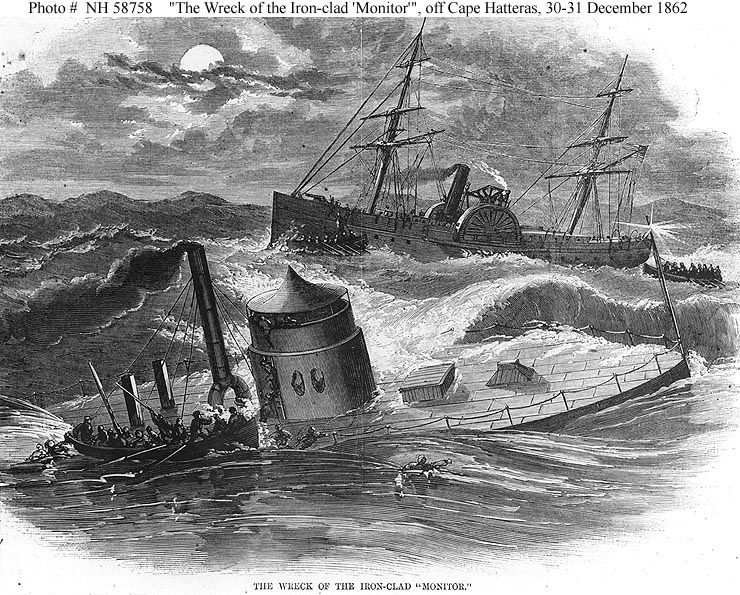
Line engraving published in "Harper's Weekly", 1863, depicting USS Monitor sinking in a storm off Cape Hatteras on the night of 30-31 December 1862. A boat is taking off crewmen, and USS Rhode Island is in the background.
Monitor artifacts
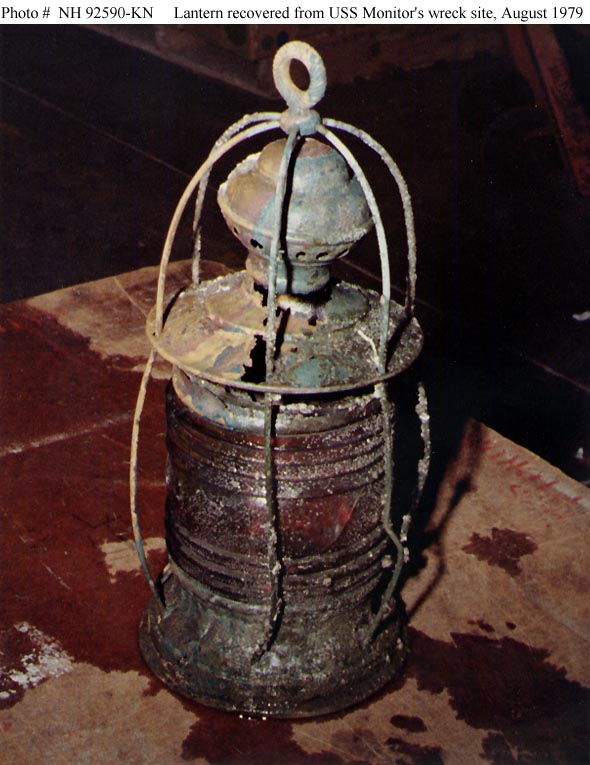
Lantern recovered from the ship's wreck site in August 1979. It was photographed soon after recovery, before conservation work had begun.
USS Monitor sailors
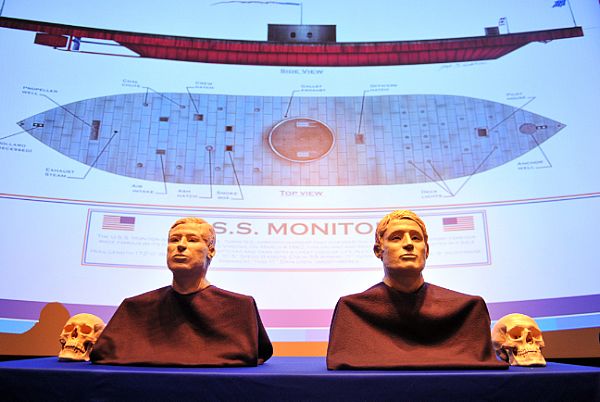
The facial reconstruction of two sailors whose remains were discovered inside the gun turret of the USS Monitor after it was raised from the ocean floor in 2002.



